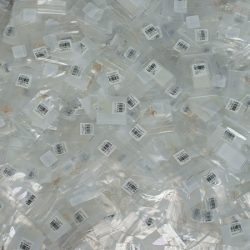New environmental exposure data added to CanPath: Greenness, air quality, and accessibility
CanPath is excited to continue collaborating with the CIHR-funded Canadian Urban Environmental Health Research Consortium (CANUE) by linking a third round of environmental exposure data to the national harmonized CanPath datasets. Since 2016, CANUE has gathered and standardized environmental exposure data on air and noise pollution, land use, community amenities, green spaces, climate, and socioeconomic conditions. This data is then linked to Canadian cohort studies and health databases. CANUE and CanPath conducted their first linkage activity in May 2019, followed by a second round of linkage in June 2021. The CANUE environmental exposure data was merged with CanPath’s national harmonized datasets using participants’ 6-digit residential postal codes and are available to researchers. This year, 17 new datasets were added to the existing 27 environmental exposure datasets, providing additional measures of greenness, air quality, accessibility, and socioeconomic factors. “The key strength of CanPath’s collaboration with CANUE is the wide-ranging environmental exposures captured, allowing for diverse analyses beyond disease prevention, including developing healthier environments,” says Sheraz Cheema, CanPath Data Manager. “This longitudinal data is invaluable for researchers assessing prolonged exposure impacts on health. CanPath aims to continue collecting data for 20-30 years, increasing its value over time.” Green spaces and vegetation CANUE develops data on neighbourhood greenness from two main sources. First, the MODIS satellite program has provided a consistent measure of greenness across Canada from 2000 to 2023, using a single sensor to ensure data reliability at a 250-meter resolution. Greenness is measured using the Normalized Difference Vegetation Index (NDVI) scale to characterize an area’s vegetation density. Secondly, the Landsat-based Vegetative Greenness Fractions dataset offers a finer 30-meter resolution and measures greenness. This dataset can even detect roads and buildings beneath tree canopies, offering a more detailed view. “This could be an excellent opportunity to study those vertical layers,” says Joey Syer, CANUE Data Director, “as opposed to just the horizontal layer of greenness.” New datasets linked to CanPath include: Advanced Very High-Resolution Radiometer (AVHRR) Normalized Difference Vegetation Index (NDVI) (2000-2013) Landsat – Greenest Pixel (2000-2017) Landsat – Growing Season (2000-2019) Moderate Resolution Imaging Spectroradiometer (MODIS) – Annual Max (2000-2023) MODIS – Annual Mean (2000-2023) MODIS – Growing Season Max (2000-2023) MODIS – Growing Season Mean (2000-2023) Air quality One of the relatively new datasets in CANUE’s data holdings is the Canadian Optimized Statistical Smoke Model (CanOSSEM), which Naman Paul and colleagues developed at the BC Centre for Disease Control. This dataset estimates fine particulate matter (PM2.5) and is optimized for wildfire smoke. CANUE has data from 2010 to 2022 at daily, monthly, and annual scales, and it comes on a 5 km by 5 km grid. “The variation within those five kilometres is probably not much,” says Joey, “but the fact that this data covers all of Canada makes this an unparalleled resource in terms of space and time attributes. It’s really deserving of usage and study.” New datasets include: Fine Particulate Matter (PM2.5 v4) (2000-2020) Fine Particulate Matter (PM2.5 v5) (2000-2021) Smoke Exposure (PM2.5 v2) (2010-2022) Accessibility and transportation The CanPath data assets have also been updated with many new datasets in the ‘neighbourhoods’ domain. These include the Canadian Bikeway Comfort and Safety Classification System (Can-BICS) metrics, which measure the quantity and quality of cycling infrastructure in Canadian communities, and several spatial accessibility indicators, which provide information on access to different services and amenities. “By linking these and other CANUE datasets to CanPath data, we can explore how the built environment affects chronic health conditions like never before,” says Dr. Dany Doiron, CANUE Managing Director. New datasets include: Spatial Accessibility Measures (2021) Public Transportation (2019) Canadian Bikeway Safety Metrics (Can-BICS) (2021) Street Connectivity (2019) Other socioeconomic factors Many other socioeconomic factors can provide valuable insights into how the built environment and access to healthy food impact chronic diseases, including cancer risk and prevention. Dr. Trevor Dummer, CanPath National Scientific Co-Director, spoke about his role as a health geographer: “My interest in cancer prevention is understanding how the built environment and natural environment influences our cancer risk. This includes how our behaviours, such as physical activity or access to healthy food, are impacted by our geography. CanPath, as a longitudinal cohort linked to CANUE geospatial information and cancer registry data, has vast potential for epidemiological analysis to identify cancer risk factors and support prevention.” New datasets include: Building Density (2019) Dwellings Needing Repair (2016-2021) Canadian Food Environment Dataset (Can-FED) (2018)




